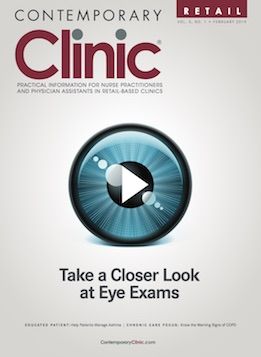How Can AOM Be Treated?
Choosing the appropriate therapy for Acute Otitis Media can contribute to Antibiotic Stewardship Programs
Otitis media refers to inflammation of the middle ear1and can be classified into 3 subtypes:
acute otitis media (AOM), chronic otitis media, and otitis media with effusion. AOM accounts for about 16 million emergency department and outpatient clinic visits each year in the United States.2Ninety-six percent of AOM is caused by bacteria and/or a virus, with just 4% of cases from viral causes alone.3The most common bacterial pathogens for AOM are Hemophilus influenzae, Moraxella catarrhalis, and Streptococcus pneumoniae.
Guidelines
There are no society clinical guidelines for AOM in adult patients. Therefore, AOM pharmacotherapy is left to clinicians’ discretion based on a confirmed or suspected microbial pattern and pain level. In its 2013 clinical guideline “The Diagnosis and Management of Acute Otitis Media,” the American Academy of Pediatrics (AAP) suggests managing pain from otalgia, as well as antibiotic therapy for certain categories of AOM.3Pain associated with AOM is generally considered tolerable. However, when AOM persists more than 24 hours despite antibiotic therapy, pain and fever may become major concerns. The AAP suggests that pain management may be considered, regardless of whether antibiotic therapy is prescribed. Suggestions include oral acetaminophen, ibuprofen, codeine or its analogues, and topical benzocaine, lidocaine, and procaine. Topical products should be used only by patients who are 5 years or older. For severe bilateral or unilateral AOM, with moderate to severe otalgia for at least 48 hours and a temperature of 39°C or higher, the AAP suggests antibiotic therapy for patients who are at least 6 months of age. If there are no severe symptoms present, antibiotic therapy is still an option.
However, observation with close follow-up may be considered for unilateral infection in those 6 to 23 months of age. For patients who are 24 months or older without severe symptoms, either antibiotic therapy or observation may be considered. For observation, antibiotic therapy is suggested if symptoms do not improve within 48 to 72 hours from their onset. The AAP suggests high-dose amoxicillin as firstline therapy for severe bilateral or unilateral AOM. Exclusion applies to those who received amoxicillin within the past 30 days and had concurrent conjunctivitis, as well as suspected β-lactamase—positive bacteria. If the patient meets the exclusion criteria for amoxicillin, the prescriber should consider the other first-line option, high-dose amoxicillin/clavulanic acid (Augmentin). If the patient has a penicillin allergy, alternative agents such as cefdinir, cefpodoxime, ceftriaxone, and cefuroxime may be considered. If initial antibiotic therapy fails, another course of antibiotic is suggested 24 to 48 hours after treatment, in which case high-dose amoxicillin/ clavulanic acid, ceftriaxone, or clindamycin may be considered. Intramuscular ceftriaxone is a good choice for those who are not able to tolerate the oral dosage form or if there are concerns about medication compliance.
Conclusion
It is important for pharmacists to understand the pathophysiology of AOM and its treatment options to guide prescribers in various clinical settings. Choosing the appropriate antibiotic therapy for AOM can contribute to antibiotic stewardship programs, which are intended to improve patient care and safety. Pharmacists’ roles should include working with prescribers to optimize pharmacotherapy, educating patients, improving medication compliance, and enhancing an understanding of self-monitoring strategies.
References
- Frei C, Frei B. Upper respiratory tract infections. In: DiPiro JT, Talbert RL, Yee GC, Matzke GR, Wells BG, Posey L, eds.Pharmacotherapy: A Pathophysiologic Approach.10th ed. New York, NY: McGraw-Hill; 2018.
- 2. Hing E, Hall MJ, Ashman JJ, Xu J. National Hospital Ambulatory Medical Care Survey: 2007 outpatient department summary.Natl Health Stat Report2010;(28):1-32. 3. American Academy of Pediatrics. The Diagnosis and Management of Acute Otitis Media.Pediatrics Clinical Practice Guideline. 2013;131(5):e964-e999. doi:10.1542/peds.2012-3488.

